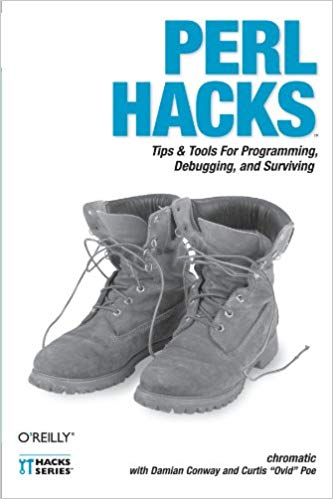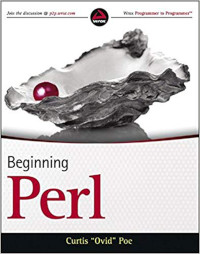My eight-year old daughter surprised me again. She likes getting simple math problems to solve at bedtime and for a recent bedtime story, the equation I asked her to solve was this:
$$3\times\sqrt{25}\times5$$
After a pause, she answered 75. I was happy, but then I asked her how she solved it.
For myself, after reducing $\sqrt{25}$ to 5, I solved 3 x 5 and then 15 x 5.
I then thought 5 x 5 followed by 3 x 25 is easier because multiplying by 25 is easier for me than multiplying by 15. Hence my wanting to know which way she chose to solve it. And her answer?
Three times five is fifteen. So we have fifteen times five. That’s twelve times five, or sixty, and I added fifteen.
Well, damn. Perfectly correct. She’s a reincarnated Babylonian mathematician.
The Babylonians used base 60 math (which they inherited from Sumerians) which is why we have 60 seconds in a minute and 60 minutes in an hour. So naturally my daughter’s comment made me think of the Babylonians and I started doing some reading.
If you’ve ever worked with different mathematical bases, you might be wondering how the Babylonians memorized 60 different symbols for their numbers.
Turns out they didn’t. They only had two symbols, a unit symbol and a 10 symbol (so, some hints of base 10). We can’t easily write cuneiform, but if we pretend the units symbol is | (the pipe character) and the tens is «, they we could write 54 as «««««||||.
In Unicode’s interpretation of cuneiform (assuming you have the font installed), that’s 𒐐𒐘. But note that cuneiform is complicated and evolved over millennia, so the Unicode representations don’t appear to quite match the real ones I’ve seen online.
But where does base 60 come in? Well, recall that in base 10, the number 365 can be thought of as this:
$$3\times10^2+6\times10^1+5\times10^0$$
For the Babylonians, they might have written |||||| ||||| (a six and a five with a space in between) which is:
$$6\times60^1+5\times60^0$$
Or in cuneiform, 𒐚 𒐙, or after 300 CE: 𒐚𒑱𒐙.
You might ask how they dealt with zero. For example, the number 1 (one) might be 𒐕, but the number 60 (1x60) would also be 𒐕 unless there was a space after it to denote the units position: 𒐕𒑱. Apparently the Babylonians didn’t think this a problem and, in fact, that middle '𒑱' character to separate digits was only introduced about 300 CE, so prior to that, you’d have to pay very careful attention to the position of the numbers in columns to hope you interpreted ambiguous numbers correctly.
That separator character solves all sorts of grief, I might add. The number 61 is 𒐕𒐕, but the number 2 is 𒐖. It’s easy to get them wrong unless you write 𒐕𒑱𒐕.
That being said, after mentioning to my daughter that Babylonian numbers were base 60, she immediately wanted to know about them. So I showed her the basics and after converting our year, 2019, to Babylonian, we got 𒌍𒐗 𒌍𒐝 (33;39). I then worked with her to show her that in different bases, the “columns” of numbers of powers of the base (from right to left, they’re 0,1,2,etc.), so after she translated the above “digits” to 33 and 39 respectively, I showed her how that works out to $33\times60^1 + 39\times60^0$. And that equals 2019.
Her mind was blown, but she thought it was one of the coolest things she’s ever seen.
You can read more about Babylonian numbers here.
It should also go without saying that I’m hardly an expert on cuneiform of Babylonian mathematics, so if you or or know anyone who is, I’d love corrections.
And if you’re software developer, here’s a quick Perl script I wrote to convert base 10 numbers to Babylonian:
#!/usr/bin/env perl
use strict;
use warnings;
use utf8;
binmode STDOUT, ':utf8_strict';
foreach my $num (@ARGV) {
my $orig = $num;
if ( $num < 1 || $num != int($num) ) {
die "'$num' is not a positive integer";
}
my $base = 60;
my $space = '𒑱';
my %numbers = qw(
0 ␣
1 𒐕 2 𒐖 3 𒐗 4 𒐘 5 𒐙 6 𒐚 7 𒐛 8 𒐜 9 𒐝 10 𒌋␣
11 𒌋𒐕 12 𒌋𒐖 13 𒌋𒐗 14 𒌋𒐘 15 𒌋𒐙 16 𒌋𒐚 17 𒌋𒐛 18 𒌋𒐜 19 𒌋𒐝 20 𒎙␣
21 𒎙𒐕 22 𒎙𒐖 23 𒎙𒐗 24 𒎙𒐘 25 𒎙𒐙 26 𒎙𒐚 27 𒎙𒐛 28 𒎙𒐜 29 𒎙𒐝 30 𒌍␣
31 𒌍𒐕 32 𒌍𒐖 33 𒌍𒐗 34 𒌍𒐘 35 𒌍𒐙 36 𒌍𒐚 37 𒌍𒐛 38 𒌍𒐜 39 𒌍𒐝 40 𒐏␣
41 𒐏𒐕 42 𒐏𒐖 43 𒐏𒐗 44 𒐏𒐘 45 𒐏𒐙 46 𒐏𒐚 47 𒐏𒐛 48 𒐏𒐜 49 𒐏𒐝 50 𒐐␣
51 𒐐𒐕 52 𒐐𒐖 53 𒐐𒐗 54 𒐐𒐘 55 𒐐𒐙 56 𒐐𒐚 57 𒐐𒐛 58 𒐐𒐜 59 𒐐𒐝
);
my @result;
do {
unshift @result => $num % $base;
$num = int( $num / $base );
} while ( $num >= $base );
unshift @result => $num if $num;
my $babylonian = join $space => map { $numbers{$_} } @result;
print "$orig is '$babylonian'\n";
}
__END__
=encoding utf8
=head1 NAME
babylonian.pl - print Babylonian numbers
=head1 SYNOPSIS
$ ./babylonian.pl 123456789
𒐝𒑱𒌍𒐕𒑱𒌍𒐗𒑱𒌍𒐗𒑱𒐝
=head1 DESCRIPTION
Given a positive integer, prints the Babylonian version of it.
See also: https://mathandinformatic.wordpress.com/numbers-and-number-theory/


